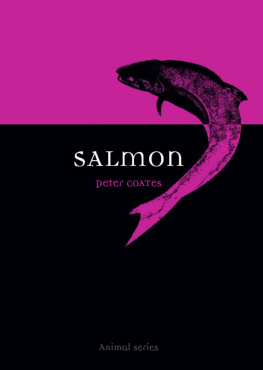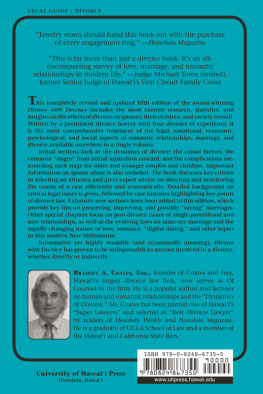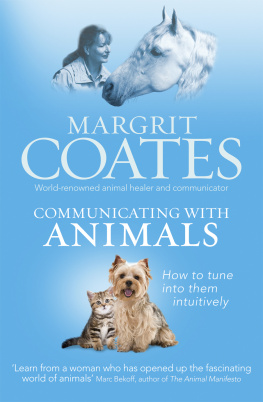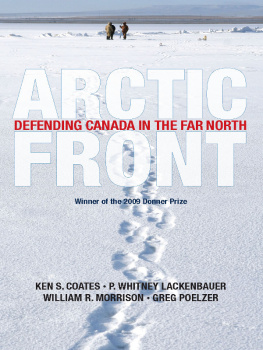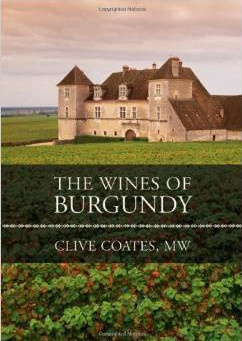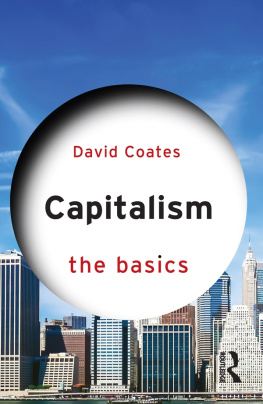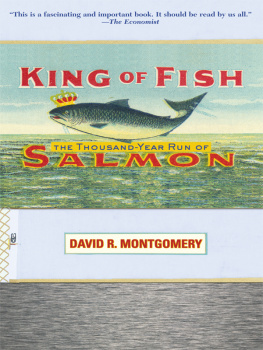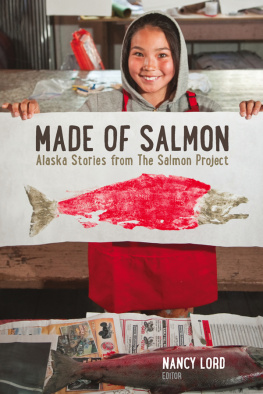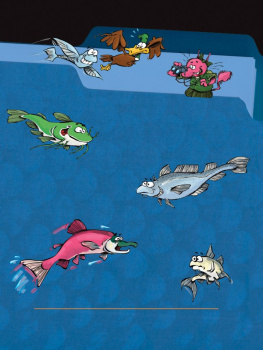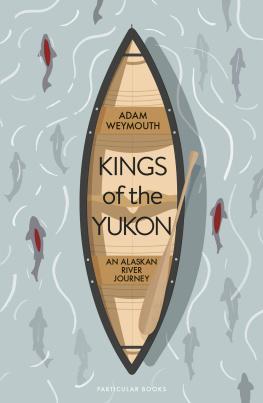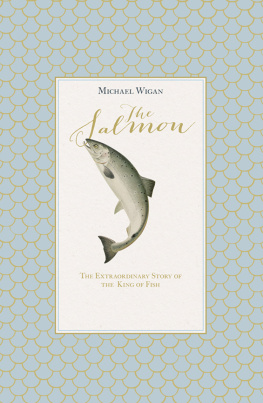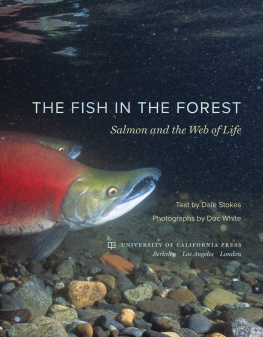No part of this publication may be reproduced, stored in a retrieval system or transmitted, in any form or by any means, electronic, mechanical, photocopying, recording or otherwise without the prior permission of the publishers.
1. Salmon 2. Salmon fisheries History
Introduction
One of the most striking stories we have taken from the lives of our fellow creatures is the one about the salmons last journey to do its natural duty (to quote Izaak Walton).
The salmons stamina is also famous. A Briton reported in the 1840s that it could cover 24 feet (7.3 metres) per second in relatively calm lake waters. At 86,400 feet (26.3 kilometres) an hour, he calculated that a salmon could circumnavigate the globe in just a few weeks! Salmon also undergo remarkable physiological changes to prepare themselves for saltwater life and to re-equip themselves for a return to freshwater some years later, after thousands of miles of ocean roaming,
Inspired by its remarkable life cycle, we have selected the salmon as a symbol of indomitable fortitude and endurance, self-sacrifice, loyalty to place, untamed wildness, irrevocable fulfilment of destiny and the powerful intimacy between life and death. We routinely describe its journey home as a pilgrimage or an epic. (The salmon features as a symbol of wondrous voyaging and inter-galactic roving in a posthumous collection of writings by the author of The Hitchhikers Guide to the Galaxy.) Fish tend to lack the qualities of beauty, dignity and grandeur that endear certain mammalian members of the animal kingdom to us. But we have elevated the salmon to the regal ranks of the tiger, the lion and the stag. The king of kings, the chinook salmon of the Pacific (also known as king salmon), can weigh as much as 56 kilograms and measure 1.5 metres. Over short distances, it can accelerate faster than a Ferrari.
The kingly salmons habits have puzzled observers for centuries. As Thomas Fuller remarked in the Herefordshire chapter The salmons homing instinct is one of the natural worlds greatest wonders and one of the most enduring of biological mysteries.
Yet the fish offers much more than a scientific challenge. Relations between salmon and people in the northern hemisphere are close, extensive and long-standing; in fact, we co-evolved with them. Chapter Two (Edible Salmon, or the salmon as food) looks at the most basic form of contact that we (and many other creatures) have had with them: as consumers of their nourishing flesh. Entire communities have been embedded in salmon, giving rise to the notion of salmon nation and salmon people. For tribal populations sharing its freshwater range on North Americas west coast, the salmon occupied the same position as the buffalo in the lives of the Indians of the Great Plains.
Since the Middle Ages, however, this local food, the basis of subsistence economies, has become a lucrative commodity within an increasingly global economy. And, unlike many other natural resources, the available amount has actually expanded. Yet subsequent developments in the making of fish confounded Robert Blatchfords notion of a finite resource. Thirty years ago, fresh salmon was a luxury item in European cuisine. Now it is one of the most widely available of fishes thanks to the aquaculture boom. It is difficult to make a case for salmon as another fish that changed the world (a reference to Mark Kurlanskys Cod: A Biography of the Fish that Changed the World). For many in North America and western Europe, though, farmed salmon is the new cod. A much coveted fish traditionally associated with privilege is now one of the cheapest on the fishmongers slab.
Salmon is a controversial as well as widespread dish, though, and a highly paradoxical fish. News bulletins and frontpage stories announce the latest scientific studies that advise us to limit our consumption of farmed salmon on health and ecological grounds. Celebrated for centuries by enamoured anglers as the noblest of fish, a heroic symbol of unfettered freedom, the salmon is now just as likely to be deplored as the ignoble product of the aquatic equivalent of battery farming. (The recent British brouhaha peaked in December 2004 when celebrity chef Jamie Oliver got into hot water for his TV advert promoting Sainsburys smoked salmon. The farm on Loch Hourn, Inverness-shire, that featured in the advert, it emerged, was being investigated by the Scottish Environmental Protection Agency for polluting local waters. Meanwhile, Oliver himself eschewed farmed salmon in his London restaurant.) While supermarket fish counters are awash with farmed salmon, some local wild populations teeter on the brink of extinction. A salmons life seems to be a very short and a very hard one, reflected an American angler in the 1930s. He lives, on the Nonetheless, the return of the wild salmon has also grabbed the headlines, recent reappearances in once-blighted European rivers hailed as a welcome antidote to the usual tales of ecological woe.

